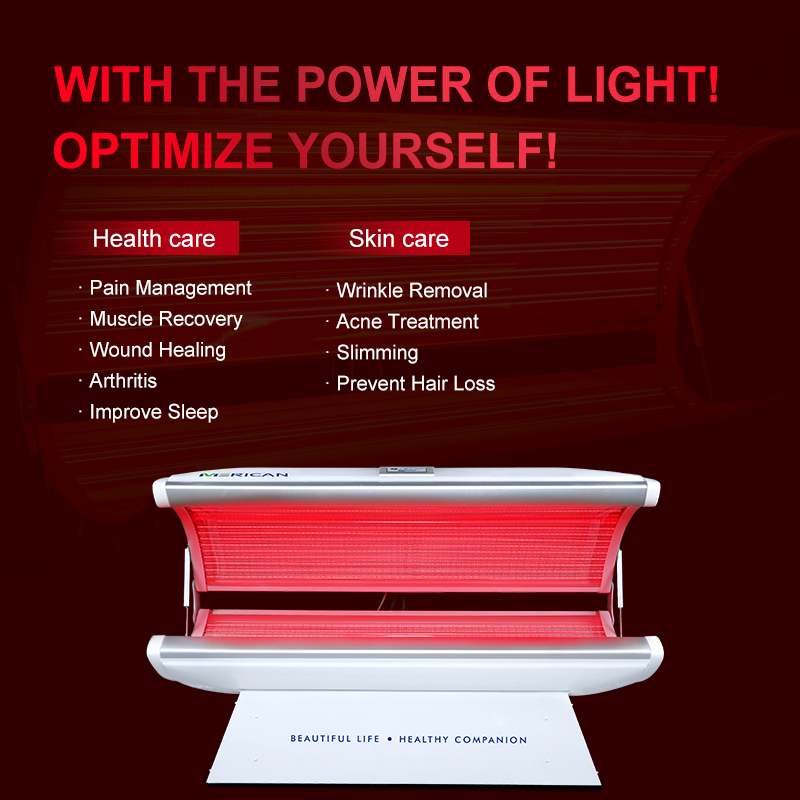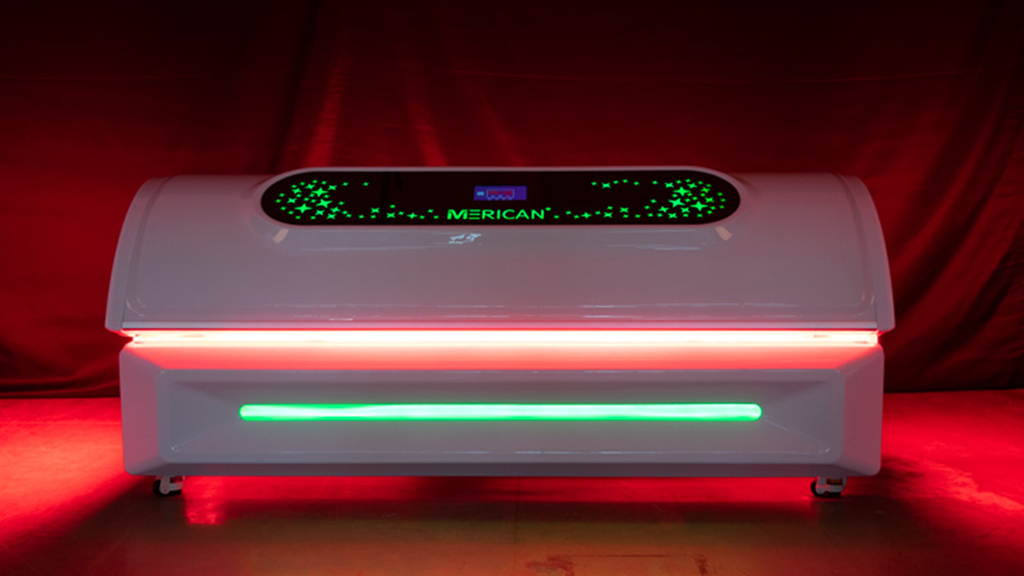The proliferation of red light therapy beds in various settings, including spas and wellness centres, is indicative of their growing popularity. Claims have been made for the treatment, including the improvement of skin condition, the acceleration of recovery and the alleviation of pain. These high-tech devices are generating a considerable amount of interest. However, concerns regarding the safety of these devices persist. While the concept of utilising light for therapeutic purposes might appear to be a product of the future, it is essential for consumers to be well-informed before making a decision to invest in such a device. The following discussion will address the functionality of these devices, their purported benefits, potential safety concerns, and recommended usage practices.
What Is Red Light Therapy?Red light therapy is a treatment that involves the application of low-wavelength red or near-infrared light to the skin. This light penetrates deep into the skin to stimulate healing processes at the cellular level. It is employed in the treatment of various dermatological conditions, pain management, muscle recovery, and even promoting hair growth. A notable distinction of red light therapy is its safety profile when compared with traditional UV light therapy, as it does not cause damage to the skin. The therapeutic effects of red light therapy are believed to be a result of increased collagen production, improved circulation, and reduced inflammation.
The following essay will explore the functionality of red light therapy beds.
The popularity of red light therapy beds is increasing due to their potential therapeutic benefits; however, the precise mechanisms by which they act remain to be fully elucidated. An analysis is therefore required in order to determine their functionality.
At the core of the red light therapy bed is the use of low-level wavelengths of light, usually between 600 to 650 nanometers (red light) and 800 to 850 nanometers (near-infrared light). These wavelengths have the capacity to penetrate deep into the skin, reaching tissues, muscles, and even bones, thereby promoting cellular repair and regeneration. In contradistinction to conventional light therapy, which exerts its effects solely on the superficial layers of the skin, red light therapy penetrates deeper layers, thereby initiating a plethora of healing processes.
A typical red light therapy apparatus comprises multiple light panels that emit the specific wavelengths necessary for effective therapy. The configuration of these panels is such that they emit consistent, high-quality light energy that is safe for skin exposure. The bed itself is ergonomically designed to ensure patient comfort whilst ensuring that the light reaches as much of the body as possible during each session. Some commercially available red light therapy beds may also feature additional settings, such as adjustable intensity levels, timers, and even heat options to enhance the therapy’s benefits.
A critical question to consider is whether these devices are safe.
Prior to the utilisation of a commercial red light therapy bed, it is reasonable to raise concerns regarding their safety.
The FDA has approved and regulated red light therapy devices for specific medical purposes, including wound healing and reducing inflammation. The FDA has approved red light therapy devices for specific medical purposes, including wound healing and reducing inflammation. However, it is important to note that the FDA does not regulate these devices for cosmetic purposes, such as anti-aging, and therefore it is essential to select a reputable device.
Safety Standards for DevicesRed light therapy devices, including therapy beds, are designed with built-in safety standards. The light emitted is non-UV, which means it will not cause skin damage like sun exposure. Furthermore, the majority of these devices are equipped with timers and safety protocols, ensuring that users are not subjected to excessive light exposure.
Opinions among experts on the safety of red light therapy beds are largely positive, with most experts agreeing that red light therapy beds are safe when used correctly. However, it is strongly recommended by the majority of professionals that the beds should be used under the supervision of a qualified healthcare professional in a controlled environment. However, overexposure to the light can result in mild side effects, such as eye strain or skin irritation.
Benefits of Red Light Therapy
Red light therapy isn’t just a one-trick pony; it has a wide range of benefits that make it appealing for various therapeutic and cosmetic purposes.

Red light therapy has been demonstrated to possess the capacity to enhance cutaneous health. It has been demonstrated that the stimulation of collagen production leads to a reduction in the visibility of wrinkles, fine lines, and sagging skin. The efficacy of red light therapy in improving skin texture and reducing acne scars has been well-documented, with regular sessions in a red light therapy bed demonstrating significant outcomes.
2. Pain Relief and Muscle RecoveryRed light therapy has also been found to be effective in the field of sports injury rehabilitation, with athletes and fitness enthusiasts reporting significant improvements in muscle recovery when utilising red light therapy beds. The therapy has been shown to reduce inflammation and promote faster healing of sore muscles, joint pain, and even chronic pain conditions like arthritis. The enhanced circulation induced by red light facilitates the delivery of nutrients to injured tissues, thereby accelerating the recovery process.
3. Beyond the benefits for skin and muscle, red light therapy has been linked to enhanced blood circulation. This enhanced circulation facilitates the healing process for wounds, cuts, and bruises. This makes red light therapy beds useful not only for cosmetic benefits but also for overall healing.
It is imperative to ascertain whether there are any potential risks or adverse effects associated with this treatment.
Although red light therapy is generally considered to be safe, there are still potential risks involved. Firstly, who should avoid using red light therapy beds? Individuals with certain medical conditions, such as photosensitivity, or those on specific medications, should exercise caution and avoid red light therapy. Individuals concerned about their suitability for therapy are advised to seek medical advice.
Common Side EffectsSome people may experience mild side effects such as dry skin, eye strain, or temporary redness. These effects are usually mild and subside shortly after the session. It is imperative to don protective eyewear to avert ocular strain.
Prior to the initiation of red light therapy, it is advisable to consult with a healthcare professional, particularly in cases of pregnancy, light sensitivity, or concurrent chemotherapy treatment. It is also important to avoid using the therapy on open wounds or skin conditions unless instructed by a doctor.
The following guidelines are provided to ensure the safe use of red light therapy beds:
LED Red Light Therapy Bed M4N
To ensure optimal benefits and safety during treatment:
The duration and frequency of sessions: The majority of individuals initiate treatment with sessions lasting approximately 10-20 minutes, administered 2-3 times per week. It is imperative to avoid overuse of the therapy.
Protective measures: The use of protective goggles is mandatory in order to safeguard the eyes from potential damage. If individuals are sensitive to light, it is advisable to exercise restraint in the use of the bed.
In selecting a reputable provider, it is advisable to conduct thorough research to ascertain the reliability and the credentials of the provider. Regardless of whether one elects to purchase red light therapy beds for domestic use or contemplates the acquisition of commercial red light therapy beds, it is imperative to ascertain that the device is from a reputable red light bed manufacturer with a proven track record of delivering satisfactory products.
A comparison of red light therapy beds and other light therapy devicesIn the field of light therapy, red light therapy beds have been shown to be more efficacious than other devices, such as handheld LED masks or red light therapy panels. These beds offer full-body coverage and higher intensity, rendering them more suitable for treating large areas or multiple issues concurrently.
The cost of therapy bed sessions: Prices can vary significantly based on geographical location and the type of device used, with commercial red light therapy beds often costing more than home units. A single session in a commercial bed can cost between $20 and $50.
A cost-benefit analysis of at-home devices versus professional treatments is recommended. While red light therapy beds for home use can be a more affordable option in the long run, they may not deliver the same power as commercial units.
In conclusion, red light therapy beds are generally considered to be safe and effective, and can offer a variety of benefits for skin rejuvenation, pain relief, and healing. However, as with any therapeutic modality, it is imperative to utilise them correctly and to take the requisite precautions. It is imperative for individuals contemplating the acquisition of a therapy bed, whether for personal use or as a commercial enterprise, to seek out a reputable device, adhere to safety guidelines, and discern the intended application of the device.

